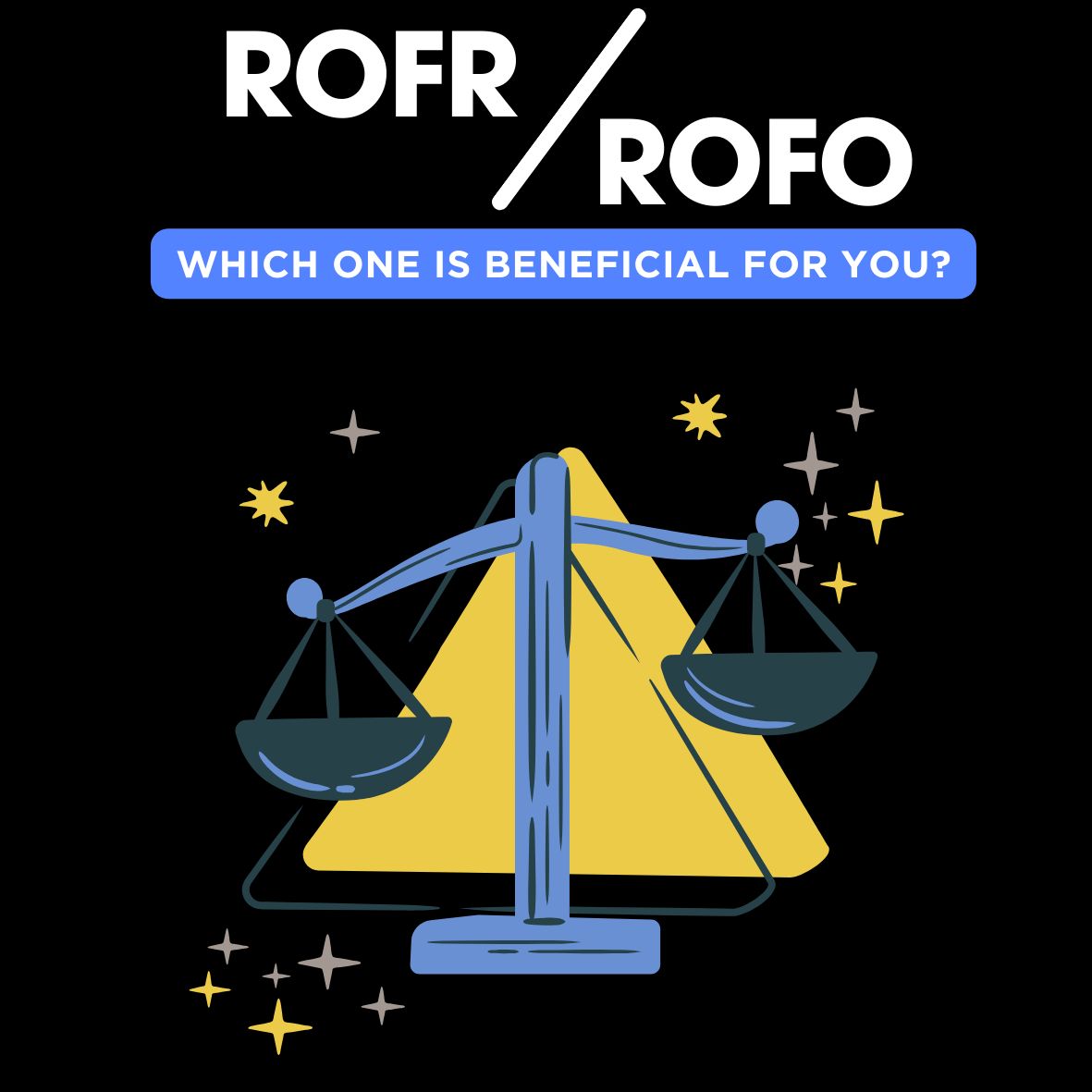Startup Learning Series: Understanding ROFR vs. ROFO
ROFR (Right of First Refusal)
➡️ What is ROFR?
The holder has the privilege to match any offer the seller receives before finalizing a deal with a third party. Essentially, they have the right to refuse an initial offer and step in with the same terms.
➡️ Example:
Startup A grants an investor a ROFR. If the startup receives a funding/ acquisition offer from Company X, the investor has the first shot at matching that offer before the startup can proceed with Company X.
ROFO (Right of First Offer)
➡️ What is ROFO?
Unlike ROFR, this gives the holder the first chance to make an offer before the seller approaches others. The seller is obligated to consider this initial offer before entertaining offers from third parties.
➡️ Example:
Startup B gives an investor a ROFO. If the startup decides to sell a portion of its shares, the investor gets the opportunity to present an offer first before the startup explores other options.
Which is more beneficial for Startups?
➡️ ROFO: This can be advantageous for startups aiming to maintain control and nurture strategic partnerships. It provides a structured process for selling shares and ensures that existing stakeholders are considered first.
➡️ ROFR: Startups looking for flexibility might prefer ROFR. It allows them to explore various offers and potentially secure a better deal.
Which is more beneficial for Investors?
➡️ ROFR: Investors seeking security and the ability to protect their investment may lean towards ROFR.
➡️ ROFO: Investors looking for proactive involvement and a first-mover advantage may find ROFO more appealing. It allows them to set the initial terms and potentially secure a deal before others come into play.
Considerations for both Parties
➡️ Negotiation Power: ROFO gives negotiating power to the holder by allowing them to set the initial terms.
➡️ Flexibility: ROFR provides flexibility for sellers to explore various offers before committing.
➡️ Relationship Dynamics: Both agreements impact the dynamics between startups and investors, requiring a careful understanding of the long-term vision and goals.
Conclusion
➡️ The choice between ROFR and ROFO depends on the specific needs and goals of the startup and the investor involved.
➡️ It's not a one-size-fits-all scenario, and understanding the nuances is crucial for creating mutually beneficial agreements.
Other posts in the Startup Learning Series:
🔗 Pre-emptive Rights: https://lnkd.in/dQKcThft
🔗 Liquidation Preference: https://lnkd.in/dRb2Eetc
🔗 Anti-dilution Clause: https://lnkd.in/dFSWs2xH
🔗 Understanding ROFR: https://lnkd.in/dxuVBxge
At STIR Advisors, we help startups and investors with our expertise to navigate through such intricacies.
ROFR (Right of First Refusal)
➡️ What is ROFR?
The holder has the privilege to match any offer the seller receives before finalizing a deal with a third party. Essentially, they have the right to refuse an initial offer and step in with the same terms.
➡️ Example:
Startup A grants an investor a ROFR. If the startup receives a funding/ acquisition offer from Company X, the investor has the first shot at matching that offer before the startup can proceed with Company X.
ROFO (Right of First Offer)
➡️ What is ROFO?
Unlike ROFR, this gives the holder the first chance to make an offer before the seller approaches others. The seller is obligated to consider this initial offer before entertaining offers from third parties.
➡️ Example:
Startup B gives an investor a ROFO. If the startup decides to sell a portion of its shares, the investor gets the opportunity to present an offer first before the startup explores other options.
Which is more beneficial for Startups?
➡️ ROFO: This can be advantageous for startups aiming to maintain control and nurture strategic partnerships. It provides a structured process for selling shares and ensures that existing stakeholders are considered first.
➡️ ROFR: Startups looking for flexibility might prefer ROFR. It allows them to explore various offers and potentially secure a better deal.
Which is more beneficial for Investors?
➡️ ROFR: Investors seeking security and the ability to protect their investment may lean towards ROFR.
➡️ ROFO: Investors looking for proactive involvement and a first-mover advantage may find ROFO more appealing. It allows them to set the initial terms and potentially secure a deal before others come into play.
Considerations for both Parties
➡️ Negotiation Power: ROFO gives negotiating power to the holder by allowing them to set the initial terms.
➡️ Flexibility: ROFR provides flexibility for sellers to explore various offers before committing.
➡️ Relationship Dynamics: Both agreements impact the dynamics between startups and investors, requiring a careful understanding of the long-term vision and goals.
Conclusion
➡️ The choice between ROFR and ROFO depends on the specific needs and goals of the startup and the investor involved.
➡️ It's not a one-size-fits-all scenario, and understanding the nuances is crucial for creating mutually beneficial agreements.
Other posts in the Startup Learning Series:
🔗 Pre-emptive Rights: https://lnkd.in/dQKcThft
🔗 Liquidation Preference: https://lnkd.in/dRb2Eetc
🔗 Anti-dilution Clause: https://lnkd.in/dFSWs2xH
🔗 Understanding ROFR: https://lnkd.in/dxuVBxge
At STIR Advisors, we help startups and investors with our expertise to navigate through such intricacies.


The eChai Effect - In Their Words
"eChai has been a game-changer for Hungrito, providing us with invaluable connections, insights, and opportunities that have significantly fueled our growth. eChai has introduced us to a global network of entrepreneurs and experts, fueling our growth and opening doors to new opportunities from Ahmedabad to Dubai. The community has become like a second family to us, providing support, guidance, and valuable insights as startup entrepreneurs."
Sahil Shah
Founder- Hungrito & Netsavvies. Digital Marketing Evangelist
"eChai is playing biggest role in my personal and professional life together. Its a community where i meet like minded people to share idea and learn from their idea. Even while playing cricket i learn something and i implement something new from that learning. Its my entry point for building network in different countries where my base is not established yet. Personally my only fun activity day in a week is eChai cricket and social."
yash shah
Chairman, ES Group of Companies
“I have no hesitation in saying that my association with eChai has been a gateway into the startup ecosystem. Through this platform, I’ve had the opportunity to connect with many young and dynamic entrepreneurs. These interactions have been immensely enriching - I’ve learned a great deal and have always tried to offer guidance whenever approached. It’s a truly symbiotic relationship that I deeply value, and it wouldn’t have been possible without eChai.”
Syed Nadeem Jafri
Founder, Hearty Mart
eChai Partner Brands
eChai Ventures partners with select brands as their growth partner - working together to explore new ideas, open doors, and build momentum across the startup ecosystem.
